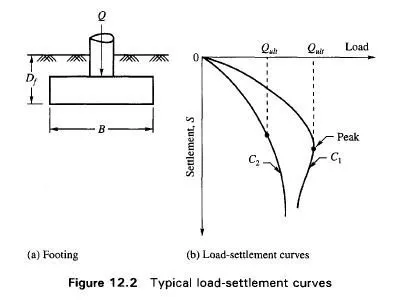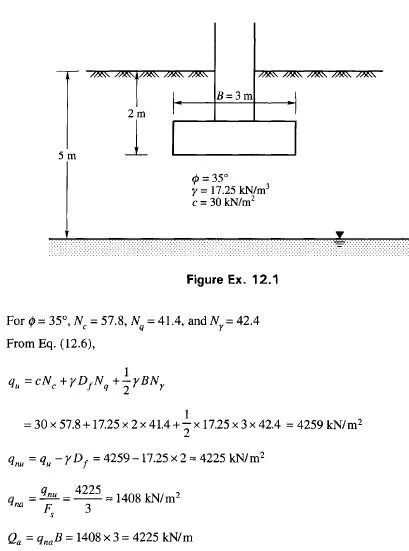Consider the simplest case of a shallow foundation subjected to a central vertical load. The footing is founded at a depth Df below the ground surface [Fig. 12.2(a)]. If the settlement, 5, of the footing is recorded against the applied load, Q, load-settlement curves, similar in shape to a stress-strain curve, may be obtained as shown in Fig. 12.2(b).
The shape of the curve depends generally on the size and shape of the footing, the composition of the supporting soil, and the character, rate, and frequency of loading. Normally a curve will indicate the ultimate load Qu that the foundation can support. If the foundation soil is a dense sand or a very stiff clay, the curve passes fairly abruptly to a peak value and then drops down as shown by curve Cl in Fig. 10.2(b). The peak load Qu is quite pronounced in this case. On the other hand, if the soil is loose sand or soft clay, the settlement curve continues to descend on a slope as shown by curve C2 which shows that the compression of soil is continuously taking place without giving a definite value for Qu. On such a curve, Qu may be taken at a point beyond which there is a constant rate of penetration.



